
Dans la plupart des écosystèmes dans lesquels j’ai pu intervenir, les dépendances entre équipes et services ont été de grandes sources de difficultés pour la production de valeur. C’est pourquoi dès le démarrage d’une équipe, il m’apparait aujourd’hui fondamental qu’elle soit bien consciente de toutes ses parties prenantes.
Pour cela, j’utilise un atelier simple – le Stakeholder Mapping – qui, comme son nom l’indique, va permettre à l’équipe de cartographier l’ensemble de ses parties prenantes. Je vous propose dans cet article une description de l’atelier ainsi que quelques exemples pour vous permettre de mieux l’appréhender !
Fonctionnement
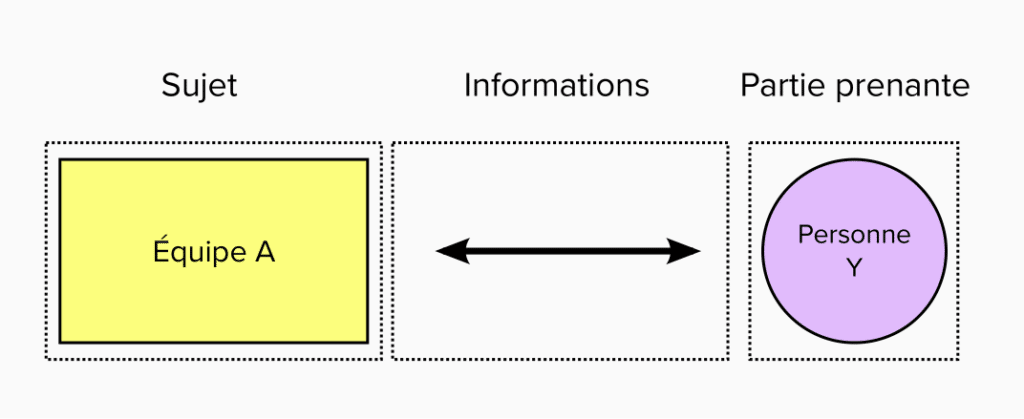
D’une manière très simple, ce l’on cherche à représenter est l’ensemble des relations de l’écosystème étudié.
On va donc distinguer 3 éléments :
- Le Sujet : l’équipe, le département, le service que l’on étudie
- Les Informations : ce qui transite, ce qui est attendu d’une entité à l’autre
- Les Parties prenantes : l’équipe, le département, le service, la personne avec qui le sujet est en relation
Animation
L’animation de l’atelier se déroule en 3 étapes :
1.Placer le sujet au centre.
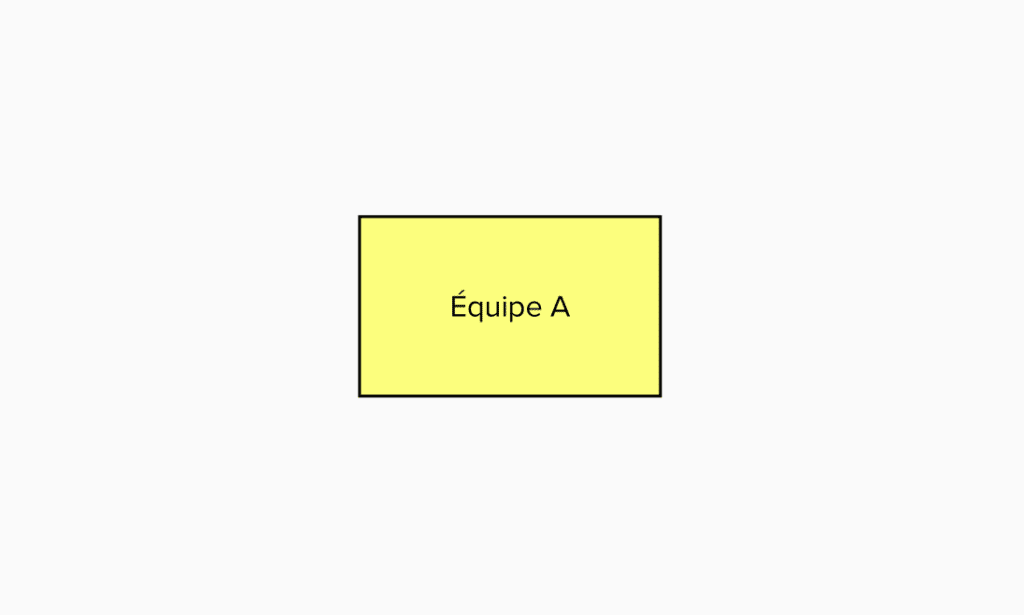
2. Lister l’ensemble des équipes, services, départements et personnes avec lesquelles elles vont devoir être en interaction pour atteindre leurs objectifs. On place ces parties prenantes tout autour de notre sujet.
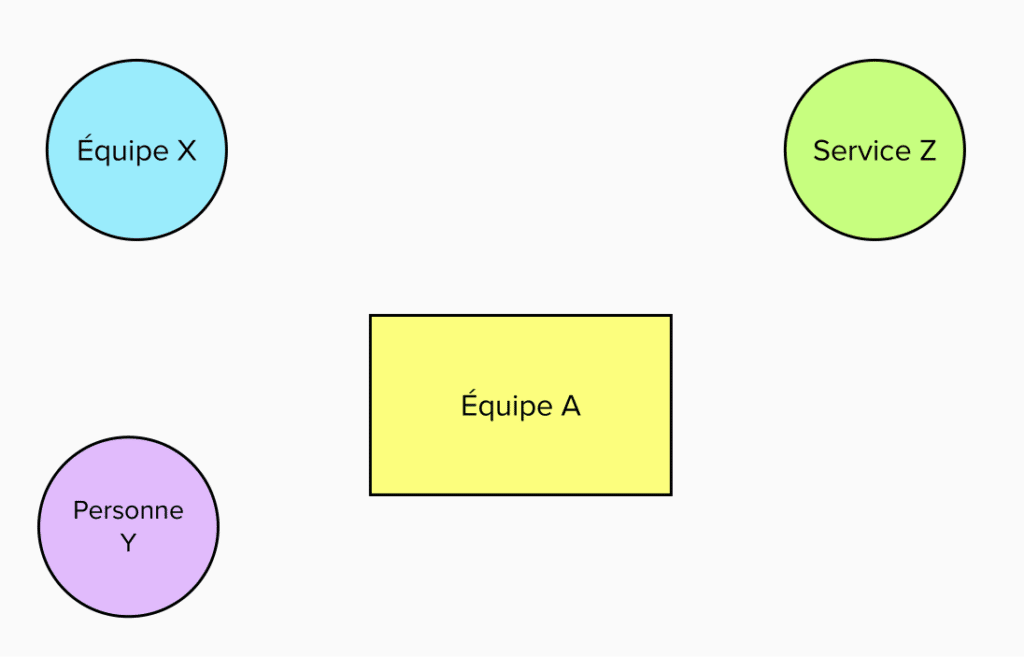
3. Définir les flux d’informations entre chacune des parties.
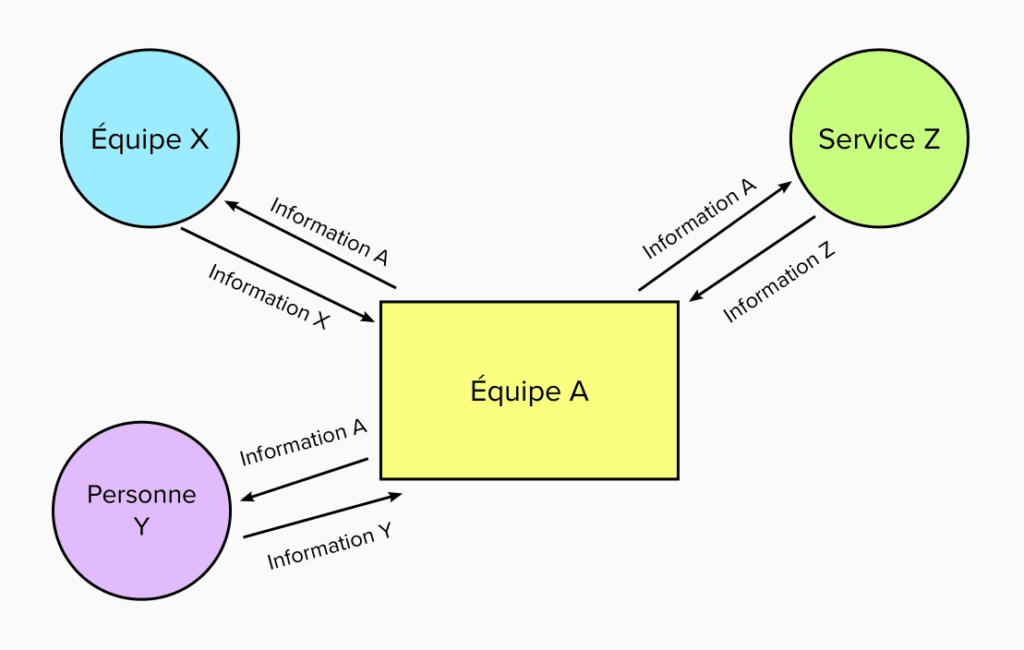
Notes : on a séparé les informations en 2 flux unidirectionnels pour permettre de bien différencier leur contenu. On pourrait également ajouter le nom et les coordonnées de la personne à contacter pour chaque partie prenante.
Le coeur de l’animation se passe donc dans le questionnement sur les différentes parties prenantes et des échanges d’informations qui ont besoin d’avoir lieu pour que tout se passe au mieux. À garder en tête qu’il n’y a jamais de mauvaise réponse car ce qui importe vraiment est la conversation qui a lieu pendant l’élaboration de cette cartographie.
Ainsi, je vous recommande de prévoir entre 1h et 2h d’atelier pour laisser suffisamment de temps à cette exploration qui va probablement tirer plein d’autres sujets ! 😉
Exemples
Voici quelques exemples de résultats d’ateliers de Stakeholder Mapping :
Exemple 1 :
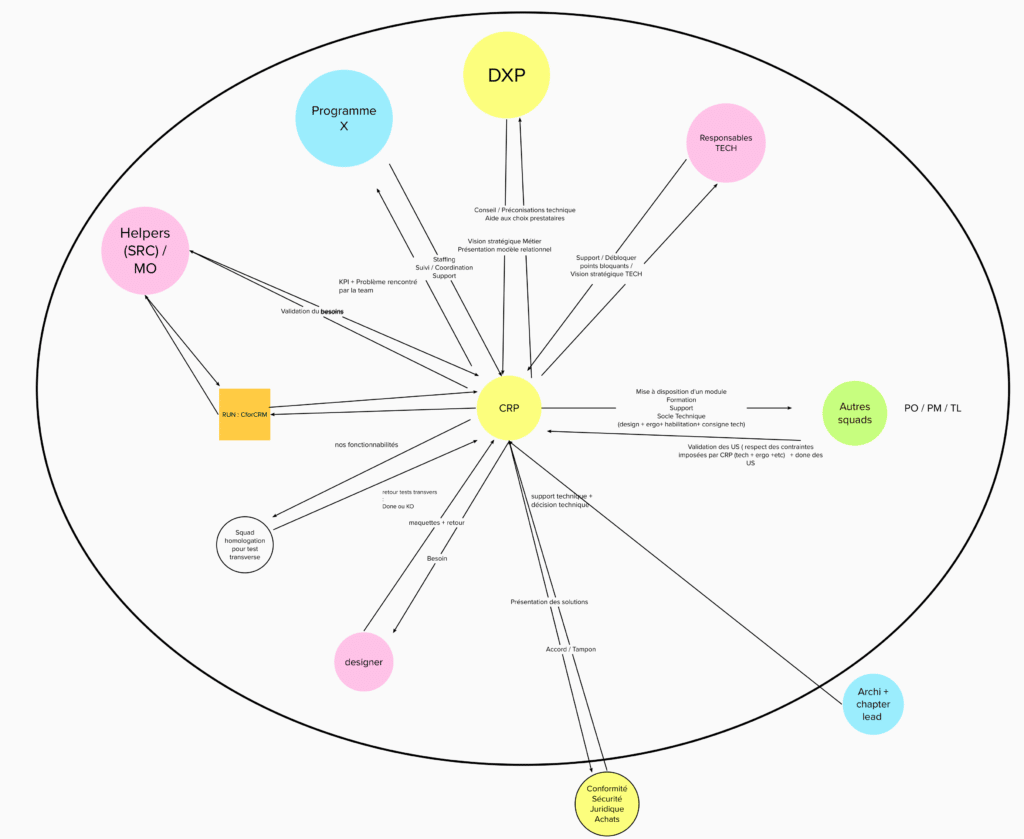
On voit ici rapidement la multiplicité et la variété des acteurs qui sont en jeu :
- du management : programme, direction, tech, chapter lead
- d’autres équipes : Product Owners, Product Managers et Tech Leads ainsi qu’une équipe Homologation
- d’autres services : conformité, sécurité, juridique, achat
- des expertises : designer, architecte
Le questionnement qui se pose souvent est de savoir si l’on sépare certaines spécialités ou si on les intègre dans un regroupement de parties prenantes.
Il n’y a pas de mauvaise réponse non plus car cela dépend de ce que l’on veut visualiser. Pour ma part, c’est la typologie d’informations échangées qui sera déterminante sur la séparation ou non des acteurs.
Note : le cercle avait initialement pour but de visualiser les parties prenantes qui étaient plus proches (ou les plus sollicitées / sollicitantes) et celles qui étaient plus lointaines. Cela a généré un certain nombre d’échanges et de mouvements, ce qui était l’effet escompté.
Exemple 2 :
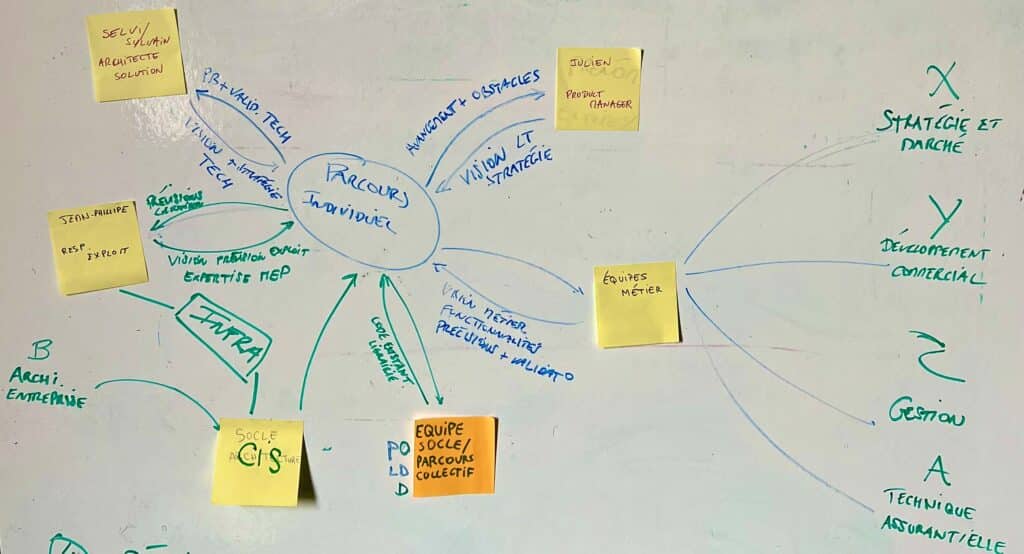
Dans cet exemple, on peut voir que certaines parties prenantes ont été nommées afin de clarifier les interlocuteurs. Cela peut être facilitant pour commencer à visualiser le rôle de chacun et le type d’échanges que l’on peut avoir avec les personnes.
L’atelier est également un bon moyen de découvrir l’organisation : en effet, on peut voir sur la droite un découpage de ce que l’on regroupait derrière « équipes métier ». Ces éléments sont issus de questionnements provenant de membres d’équipes fraichement arrivés.
Conclusion

Le Stakeholder Mapping fait aujourd’hui partie de mes ateliers incontournables. En effet, je le trouve particulièrement utile dans sa vertu à clarifier l’éco-système et à identifier les axes d’interaction critiques, non seulement pour l’équipe mais également pour moi en tant qu’accompagnant. On peut l’intégrer dans le cadre d’un kick-off d’équipe mais également comme atelier ponctuel, prétexte aux bonnes conversations.
On peut facilement le combiner avec une matrice Give and Take pour consolider les interactions mais cette fois-ci avec les parties prenantes.






